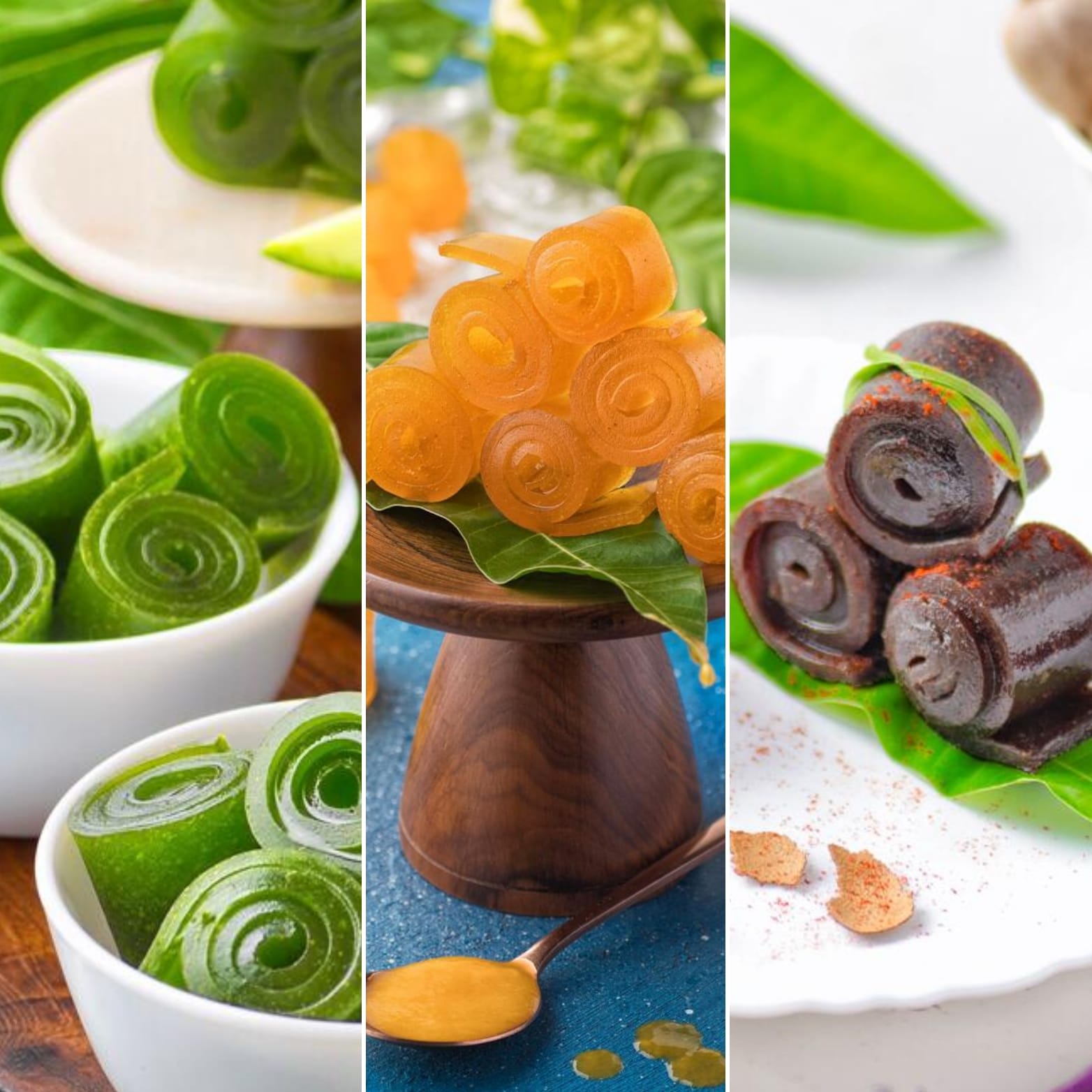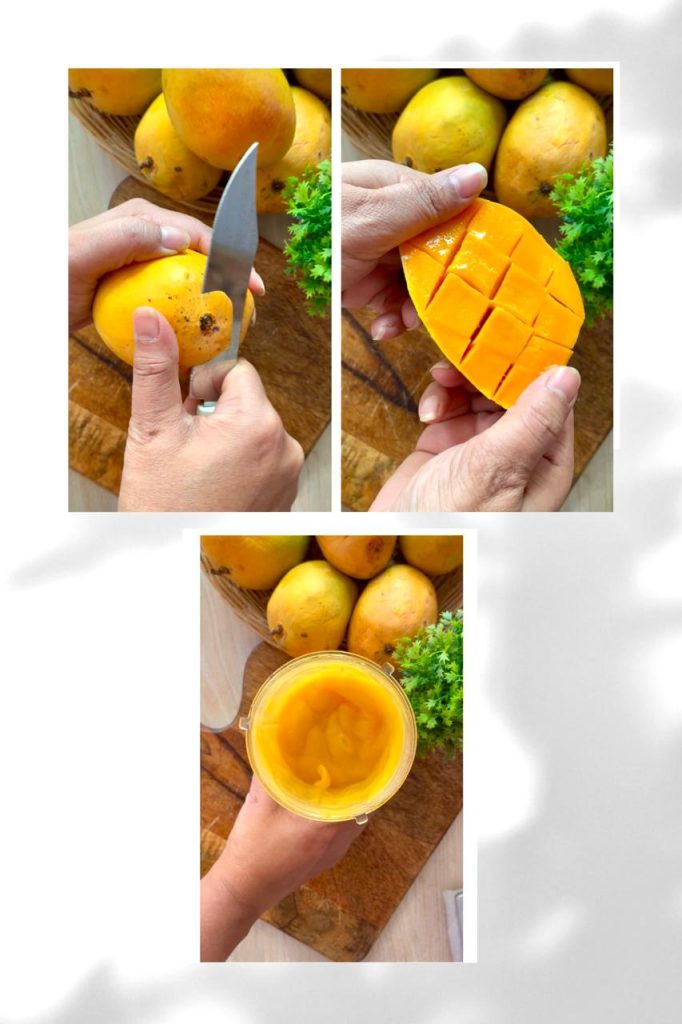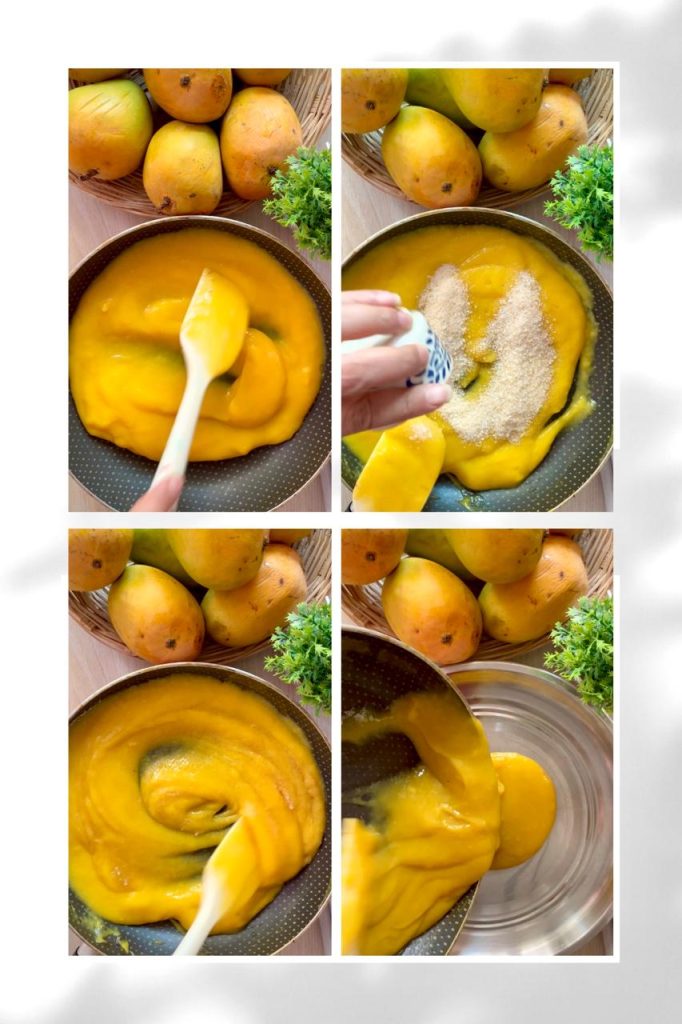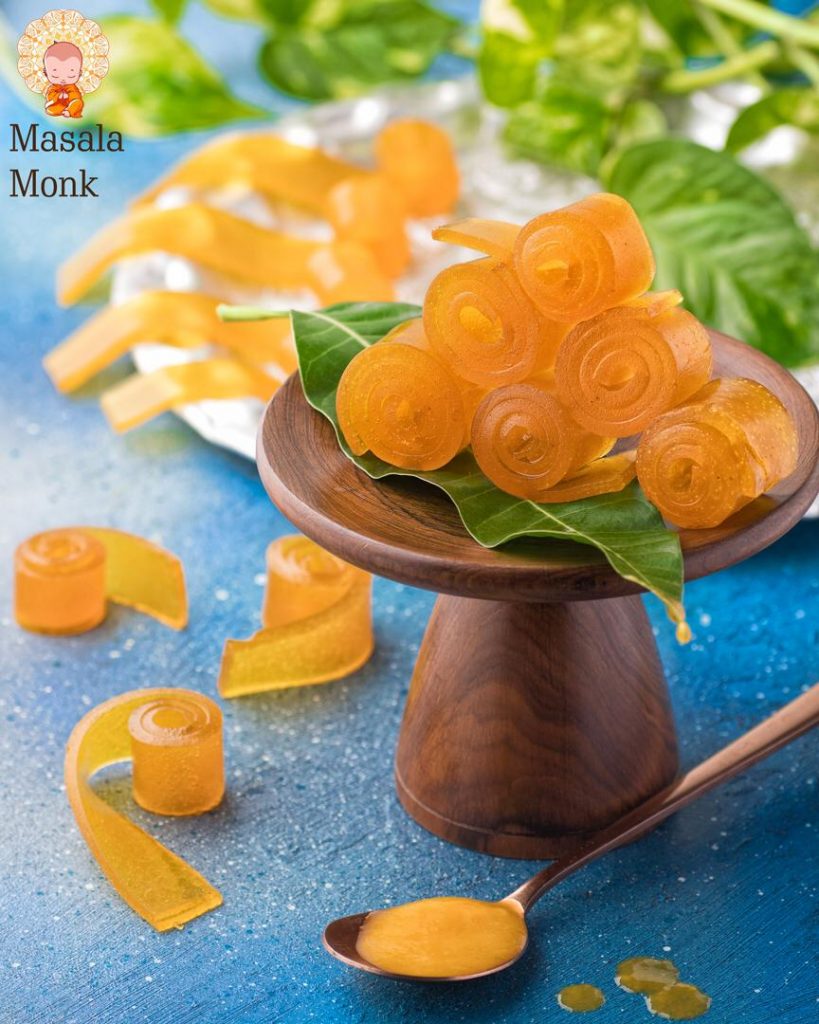
Introduction
“Craving something sweet and tangy during your pregnancy journey? You’re not alone! Many expectant mothers find themselves longing for the delightful taste of Aam Papad – a traditional Indian treat that’s as delicious as it is nostalgic. But is it just a guilty pleasure, or does it offer nutritional benefits for you and your growing baby?”
Welcome to the world of Aam Papad, a classic Indian snack that’s more than just a satisfying solution to pregnancy cravings. This mango marvel, known for its irresistible combination of sweet and sour flavors, has been a staple in Indian households for generations. But when it comes to pregnancy, Aam Papad is more than a mere treat – it’s a fusion of tradition, health, and taste.
As you navigate through the ups and downs of pregnancy, understanding what you eat becomes crucial. Aam Papad, with its rich cultural heritage and tantalizing taste, emerges as a fascinating topic. But how does it fare in the world of prenatal nutrition? Does it align with the dietary needs of an expectant mother, or should it be enjoyed with caution?
In this comprehensive guide, we’ll explore the nutritional landscape of Aam Papad, unravel its benefits and potential side effects during pregnancy, and even delve into how to incorporate it healthily into your diet. So, whether you’re here to satisfy your curiosity or looking for a healthy way to indulge in your cravings, let’s embark on this flavorful journey together!
Section 1: What is Aam Papad?
Aam Papad, an exquisite confectionery made from the king of fruits – mango, is more than just a delightful treat; it’s a tapestry of flavor and tradition woven into the fabric of Indian culture. This simple yet fascinating snack has intrigued palates for centuries, but what exactly is it, and why does it hold such a special place in the hearts of many, especially during pregnancy?
The Essence of Aam Papad
At its core, Aam Papad is a vibrant and chewy fruit leather, traditionally crafted from mango pulp. The process, rooted in the simplicity of age-old techniques, involves blending ripe mango pulp with a concentrated sugar solution and then sun-drying it to achieve that distinctive texture and flavor profile. This treat, varying in shades from golden yellow to deep orange, encapsulates the essence of mangoes in a form that can be enjoyed year-round.
A Journey Through Time
Tracing its roots back to the Indian subcontinent, Aam Papad’s history is as rich as its taste. Historically, this snack was a way to preserve the bountiful mango harvests, ensuring that the joy of mangoes could extend beyond their seasonal availability. Over time, Aam Papad has evolved, taking on various forms and flavors across different regions of India. Known by names like ‘aamba sadhaa’ in Odia, ‘amawat’ in Hindi, and ‘mamidi tandra’ in Telugu, each name reflects the diverse cultural tapestry of India.
A Cultural Mosaic
In every slice of Aam Papad, there is a story of regional pride and culinary artistry. Different regions add their unique twist to this delicacy – some prefer it sweet and plain, while others spice it up with a sprinkle of cumin or chili powder. This versatility not only makes Aam Papad a fascinating subject of culinary exploration but also a symbol of India’s diverse gastronomic heritage.
Aam Papad in Pregnancy
The allure of Aam Papad extends to the realm of pregnancy, where it often emerges as a craved snack. But this isn’t just about satisfying a sweet tooth. The traditional preparation of Aam Papad – natural, without preservatives, and packed with the goodness of mangoes – makes it a potentially nutritious choice for expectant mothers. It represents a blend of comfort food and a nutritious snack, catering to both the emotional and physical needs of pregnancy.
As we delve deeper into the world of Aam Papad, its role in pregnancy nutrition, and the best ways to enjoy it, it’s essential to appreciate this snack not just as a treat but as a part of a rich cultural legacy. In the next sections, we’ll explore the intricate balance of cravings, nutrition, and the need for mindful indulgence during one of the most beautiful phases of life – pregnancy.
Section 2: Cravings Explained
Pregnancy is a journey filled with unique experiences and changes, not least of which are the cravings that many women encounter. Aam Papad often finds its way onto the craving list, but why? This section delves into the psychology and physiology behind pregnancy cravings, with a particular focus on the allure of Aam Papad.
Understanding the Cravings Phenomenon
Cravings during pregnancy are more than just whims. They are a complex interplay of hormonal changes, nutritional needs, and emotional factors. As the body undergoes significant transformations to support the growing fetus, it often sends signals in the form of cravings. These cravings can range from the mundane to the unusual, and understanding them is key to managing them healthily.
The Role of Hormones
Hormonal fluctuations, particularly the increase in human chorionic gonadotropin (hCG) and estrogen, play a significant role in shaping cravings. These hormonal changes can alter taste and smell sensitivity, making certain foods more appealing than others. This heightened sense of taste and smell can draw pregnant women towards foods with distinct flavors, like the sweet and tangy Aam Papad.
Nutritional Underpinnings
Sometimes, cravings are the body’s way of signaling a need for specific nutrients. The craving for Aam Papad, rich in mango pulp, could be an indication of the body’s desire for vitamins, minerals, and antioxidants found in mangoes. These nutrients are essential for both the mother’s health and the baby’s development, making Aam Papad a potentially beneficial craving during pregnancy.
Emotional Comfort and Nostalgia
Cravings also have an emotional dimension. For many, Aam Papad is not just a snack; it’s a cherished memory, a reminder of childhood, and a symbol of cultural identity. The comfort and joy derived from eating Aam Papad can be particularly soothing during the emotional rollercoaster of pregnancy, providing a sense of familiarity and nostalgia.
Aam Papad: A Symbol of Balance
While Aam Papad can satisfy sweet cravings, it’s important to balance indulgence with nutrition. Its natural sweetness and tanginess make it a preferable choice over artificially sweetened snacks. However, moderation remains key, as overindulgence in sugary treats can have adverse effects during pregnancy.
In summary, the craving for Aam Papad during pregnancy is a multifaceted phenomenon, rooted in physiological, nutritional, and emotional aspects. As we continue, we’ll explore the nutritional profile of Aam Papad, its benefits for pregnant women, and how to enjoy it responsibly.
Section 3: Nutritional Profile of Aam Papad
When it comes to pregnancy, every bite counts. Understanding the nutritional content of Aam Papad is crucial for expectant mothers who wish to indulge wisely. This section breaks down the nutritional aspects of Aam Papad, shedding light on how this traditional snack fits into a pregnancy diet.
The Essence of Mango in Aam Papad
Aam Papad is primarily made from mango pulp, a fruit celebrated for its rich nutritional profile. Mangoes are a powerhouse of vitamins and minerals, and they bring these benefits to Aam Papad. Key nutrients include:
- Vitamin C: Essential for immune system support and skin health, vitamin C also aids in the absorption of iron, a critical mineral during pregnancy.
- Vitamin A: Important for fetal development and vision health, vitamin A in mangoes contributes to the overall nutritional value of Aam Papad.
- Fiber: The dietary fiber in mangoes aids digestion, a common concern during pregnancy. It helps in preventing constipation and maintaining a healthy digestive system.
Balancing the Sugars
While Aam Papad is a source of natural fruit sugars, it often contains added sugars to enhance its taste. This aspect is particularly important for pregnant women to consider:
- Natural vs. Added Sugars: The natural sugars from mangoes are coupled with added sugars in Aam Papad. Monitoring sugar intake is crucial during pregnancy, especially for those at risk of or managing gestational diabetes.
- Energy Content: The calorie content in Aam Papad, primarily from sugars, provides quick energy bursts. However, mindful consumption is key to avoid excessive calorie intake.
Micronutrients and Antioxidants
Mangoes are also a source of various micronutrients and antioxidants:
- Potassium: Important for maintaining healthy blood pressure levels, potassium in mangoes is beneficial during pregnancy.
- Antioxidants: Mangoes contain antioxidants like beta-carotene and zeaxanthin, which are beneficial for overall health and may help in reducing inflammation.
The Need for a Balanced Approach
Given the nutritional benefits and sugar content, Aam Papad should be consumed in moderation during pregnancy. It can be a part of a balanced diet, but it shouldn’t replace nutrient-dense foods essential for pregnancy.
A Word on Commercial Variants
Commercially available Aam Papad may contain additional preservatives and colorants. Opting for homemade or organic versions where the ingredient list is transparent can be a healthier choice.
In the next section, we will discuss the specific health benefits of Aam Papad for pregnant women and how to include it in a diet that balances cravings with nutrition.
Section 4: Health Benefits and Potential Concerns of Aam Papad During Pregnancy
Pregnancy is a time when dietary choices are closely scrutinized for their impact on both the mother and the developing fetus. Aam Papad, with its unique blend of taste and nutrition, presents both potential health benefits and concerns for expectant mothers. This section delves into the dual aspects of Aam Papad consumption during pregnancy, offering a balanced perspective.
Health Benefits of Aam Papad
- Digestive Health: The dietary fiber in Aam Papad, derived from mango pulp, aids in digestion. This is particularly beneficial during pregnancy, a time when digestive issues like constipation and heartburn are common.
- Immune Support: The high vitamin C content in mangoes boosts the immune system. For a pregnant woman, a strong immune system is crucial to safeguard against infections and maintain overall health.
- Fetal Development: The presence of vitamin A in Aam Papad supports fetal development, particularly in terms of vision and bone growth.
- Natural Energy Source: The natural fruit sugars in Aam Papad provide a healthier energy boost compared to high-calorie snacks with refined sugars, helping to satisfy sweet cravings in a more nutritious way.
- Antioxidant Properties: The antioxidants in mangoes, like beta-carotene, contribute to reducing oxidative stress, which is important for maintaining overall health during pregnancy.
Potential Concerns and Moderation
While the benefits are significant, it is equally important to address the potential concerns associated with Aam Papad:
- High Sugar Content: A major concern is the sugar content in Aam Papad, particularly if additional sugar is added during preparation. Excessive sugar intake can lead to gestational diabetes and unnecessary weight gain.
- Artificial Ingredients in Commercial Variants: Store-bought Aam Papad may contain preservatives, artificial flavors, or colorants that are best avoided during pregnancy. Opting for homemade or certified organic options can mitigate this risk.
- Allergy and Sensitivity: For some, mangoes can cause allergic reactions or sensitivities. Being mindful of individual reactions to mango products is crucial during pregnancy.
- Portion Control: Moderation is key. Enjoying Aam Papad as a treat rather than a main component of the diet helps balance its sugar content with other nutritional needs.
Navigating the Balance
The decision to include Aam Papad in a pregnancy diet is a personal one and should be made considering individual health conditions and dietary preferences. Consulting with a healthcare provider for personalized advice is always recommended, especially in cases of pre-existing health conditions like diabetes.
In the next section, we will explore how cravings for Aam Papad can be understood and managed, and the importance of moderation in indulging these cravings during pregnancy.
Section 5: Managing Cravings and Moderation
Cravings during pregnancy can be a complex interplay of physiological needs and emotional desires. Aam Papad, with its unique taste and nostalgic appeal, often becomes a craved item. However, understanding and managing these cravings, especially in the context of a balanced diet, is essential. This section discusses why pregnant women might crave Aam Papad and emphasizes the importance of moderation.
Decoding the Craving for Aam Papad
- Nutritional Signals: Sometimes, cravings are the body’s way of signaling a need for specific nutrients. The craving for Aam Papad may indicate a desire for the vitamins and minerals present in mangoes, such as vitamin C and potassium.
- Sensory Appeal: The unique flavor profile of Aam Papad – sweet, tangy, and chewy – can be particularly appealing due to the heightened sense of taste and smell many women experience during pregnancy.
- Emotional Comfort: Cravings also have an emotional aspect. Aam Papad may evoke memories of comfort, childhood, or cultural traditions, offering emotional solace during the ups and downs of pregnancy.
The Role of Moderation
- Balance in Diet: While indulging in cravings like Aam Papad is generally harmless, it’s important to maintain a balanced diet. Consuming Aam Papad in moderation ensures that pregnant women can enjoy this treat without compromising on overall nutritional needs.
- Understanding Portion Sizes: Being mindful of portion sizes helps in managing the intake of added sugars and calories that come with Aam Papad. Small, controlled portions can satisfy cravings without leading to excessive sugar or calorie consumption.
- Alternating with Healthier Options: To balance out the cravings, alternating Aam Papad with healthier snack options rich in nutrients can be a wise approach. Fresh fruits, nuts, and whole grains are excellent alternatives.
Practical Tips for Moderation
- Setting Limits: Decide in advance how much Aam Papad to consume and stick to this limit. Planning helps in resisting the temptation to overindulge.
- Mindful Eating: Savor each bite of Aam Papad to derive maximum satisfaction. Mindful eating enhances the enjoyment and can help in reducing the quantity consumed.
- Incorporating Variety: Diversify the diet by incorporating a variety of snacks and flavors. This not only caters to the changing taste preferences during pregnancy but also ensures a more balanced intake of nutrients.
In the upcoming section, we will delve into the benefits of making Aam Papad at home versus purchasing store-bought versions, offering insights into how homemade Aam Papad can be a healthier and more satisfying option for pregnant women.
Section 6: Homemade vs. Store-Bought Aam Papad
In the realm of Aam Papad, there’s a significant difference between homemade and store-bought varieties, especially when considering consumption during pregnancy. This section explores these differences, emphasizing why homemade Aam Papad can be a healthier and more customizable option.
Advantages of Homemade Aam Papad
- Control Over Ingredients: Preparing Aam Papad at home allows for complete control over the ingredients. This means you can adjust the amount of sugar, avoid artificial preservatives, and use organic mangoes, ensuring a healthier snack.
- Reduced Sugar Content: Homemade recipes can be modified to reduce sugar content, which is beneficial for managing calorie intake and reducing the risk of gestational diabetes.
- No Artificial Additives: Commercial Aam Papad may contain artificial colors, flavors, or preservatives that are not ideal for consumption during pregnancy. Homemade versions are free from these additives.
- Customization for Dietary Needs: Homemade Aam Papad can be tailored to suit specific dietary requirements or preferences, such as using jaggery instead of sugar or adding nuts for extra nutrition.
- Emotional and Cultural Connection: Making Aam Papad at home can be a therapeutic activity, offering an emotional connection to cultural roots and family traditions.
Considering Store-Bought Aam Papad
While homemade is preferable, store-bought Aam Papad can be a convenient option. However, there are factors to consider:
- Checking Labels for Ingredients: It’s important to read labels for added sugars, preservatives, and artificial additives. Opting for brands that use natural ingredients is key.
- Portion Control: Store-bought Aam Papad often comes in larger packs, making portion control more challenging. Being mindful of serving sizes is important.
- Comparing Nutritional Values: Some brands might offer nutritionally enriched versions. Comparing different products for their nutritional content can help in making a better choice.
Homemade Aam Papad Recipe
Here’s a simple and healthy recipe for making Aam Papad at home:
- Ingredients: 3 cups mango pulp, ½ cup sugar (or less, as per taste), 1 tsp desi ghee, ½ tsp cardamom powder.
- Method: Cook the mango pulp with sugar, ghee, and cardamom powder until it thickens. Spread the mixture on a greased tray and let it dry in the sun. Once dried, cut it into desired shapes and store in an airtight container.
Incorporating Aam Papad in Pregnancy Diet
Homemade Aam Papad can be a delightful addition to a pregnancy diet when consumed in moderation. It can be used as a topping for yogurt, mixed with nuts for a nutritious snack, or simply enjoyed as a sweet treat.
In the next section, we will explore various creative and health-conscious ways to incorporate Aam Papad into a pregnancy-friendly diet, ensuring that cravings are satisfied without compromising nutritional integrity.
Section 7: Creative Ways to Incorporate Aam Papad in Pregnancy Diet
Integrating Aam Papad into a pregnancy diet can be both fun and nutritious. This section offers innovative ideas to include this delightful treat in various meals, ensuring that expectant mothers can enjoy Aam Papad in a healthy, balanced way.
Aam Papad as a Versatile Ingredient
- Fruit Salad Enhancer: Chop Aam Papad into small pieces and mix it with a bowl of fresh fruit salad. The tangy flavor of Aam Papad adds a delightful twist to the natural sweetness of fruits.
- Yogurt Parfait Layer: Layer Greek yogurt with granola and Aam Papad strips for a healthy and satisfying snack. The probiotics in yogurt coupled with the fiber in Aam Papad make for a digestive-friendly treat.
- Smoothie Ingredient: Blend Aam Papad pieces into smoothies for an added flavor boost. Combine with other pregnancy-friendly fruits and a scoop of protein powder for a nutritious beverage.
- Homemade Trail Mix: Create a homemade trail mix by combining small pieces of Aam Papad with nuts, seeds, and dried fruits. This snack is packed with energy, healthy fats, and fiber.
Incorporating Aam Papad in Main Meals
- Topping for Oatmeal or Porridge: Sprinkle bits of Aam Papad over oatmeal or porridge. The sweetness of Aam Papad can reduce the need for additional sugar, making for a healthier breakfast option.
- Dessert Ingredient: Use Aam Papad in desserts like puddings or fruit tarts. It can add a unique flavor and reduce the need for artificial sweeteners.
- Cheese Pairing: Pair thinly sliced Aam Papad with mild cheeses as part of a cheese platter. This can be a great way to balance the flavors and textures in a light, nutritious snack.
Nutritional Considerations
- Portion Control: While these ideas offer tasty ways to consume Aam Papad, portion control remains important. Small quantities are sufficient to add flavor without overloading on sugar.
- Balanced Diet: Ensure that Aam Papad is part of a varied diet that includes plenty of vegetables, whole grains, lean proteins, and healthy fats. Variety is key to meeting the nutritional needs of both mother and baby.
- Hydration: Pair these Aam Papad-inclusive snacks and meals with plenty of water or hydrating beverages to aid digestion and overall health.
Incorporating Aam Papad into the pregnancy diet offers a delightful way to satisfy cravings while still focusing on nutrition. With creativity and moderation, this traditional treat can be a part of a healthy, balanced diet for expectant mothers.
In the following section, we’ll offer some final thoughts and advice, including the importance of consulting healthcare providers for personalized dietary guidance during pregnancy.
Section 8: Cautionary Advice and Consulting Healthcare Professionals
Navigating dietary choices during pregnancy requires a careful balance between satisfying cravings and ensuring optimal health for both the mother and the developing baby. This section emphasizes the importance of cautionary advice and the role of healthcare professionals in guiding dietary decisions, especially when it involves traditional snacks like Aam Papad.
Understanding the Need for Medical Guidance
- Individual Health Conditions: Every pregnancy is unique, and what works for one may not be suitable for another. Conditions like gestational diabetes, hypertension, or specific food allergies necessitate personalized dietary advice.
- Nutritional Balance: While Aam Papad can be a healthy snack, it’s essential to understand how it fits into the overall nutritional needs of pregnancy. Healthcare providers can offer guidance on how to balance traditional treats with other necessary nutrients.
- Safe Consumption Practices: Professionals can advise on safe consumption practices, especially regarding homemade versus store-bought Aam Papad, considering factors like preservatives, sugar content, and potential allergens.
When to Seek Medical Advice
- Before Making Dietary Changes: It’s advisable to consult with a healthcare provider before making any significant changes to the diet during pregnancy, including the introduction of new foods like Aam Papad.
- In Case of Adverse Reactions: If there are any unusual symptoms or adverse reactions after consuming Aam Papad, such as gastrointestinal discomfort or allergic responses, it’s important to seek medical advice immediately.
- Regular Prenatal Checkups: Dietary discussions should be a part of regular prenatal checkups, ensuring that the diet aligns with the health needs of the pregnancy.
Collaborative Approach to Pregnancy Diet
- Informed Decision Making: Equip yourself with information about the nutritional aspects of various foods, including Aam Papad, but use this knowledge in conjunction with medical advice to make informed dietary choices.
- Open Communication: Maintain open communication with healthcare providers about cravings, dietary preferences, and any concerns. This collaborative approach ensures a diet that supports both maternal and fetal health.
- Empowering Expectant Mothers: Knowledge about traditional foods and their nutritional impact empowers expectant mothers to make choices that are health-conscious and culturally resonant.
Aam Papad can be a delightful part of a pregnancy diet, but it’s important to approach its consumption with knowledge, moderation, and medical guidance. By consulting healthcare professionals and making informed choices, expectant mothers can enjoy this traditional treat while prioritizing the health and well-being of themselves and their babies.
In the next section, we will wrap up our comprehensive guide on Aam Papad during pregnancy, summarizing key points and offering a final call to action for readers.
Section 9: Conclusion and Call-to-Action
As we reach the conclusion of our comprehensive guide on “Aam Papad During Pregnancy: Cravings, Nutrition, & Side Effects,” it’s time to recap the essential points we’ve covered and provide a final call-to-action for our readers. This journey through the world of Aam Papad has highlighted its cultural significance, nutritional value, and the considerations necessary for its consumption during pregnancy.
Summarizing the Key Takeaways
- What is Aam Papad?: A traditional Indian snack made from sun-dried mango pulp, known for its sweet and tangy flavor. It carries cultural and nostalgic value across various regions in India.
- Cravings and Emotional Connections: Cravings for Aam Papad during pregnancy can be attributed to hormonal changes, nutritional signals, and emotional connections. Its unique flavor profile and cultural significance make it a sought-after treat.
- Nutritional Profile: Aam Papad is rich in vitamins (particularly Vitamin C and A), fiber, and antioxidants. However, its high sugar content, especially in commercial variants, calls for mindful consumption.
- Health Benefits and Concerns: The snack offers benefits like digestive health, immune support, and energy provision. Yet, concerns around high sugar content and potential allergies emphasize the need for moderation.
- Homemade vs. Store-Bought: Homemade Aam Papad allows for control over ingredients and sugar levels, making it a healthier option compared to store-bought varieties, which may contain added preservatives and artificial flavors.
- Creative Incorporation in Diet: Aam Papad can be creatively included in various meals and snacks, offering a balance between indulgence and nutrition.
- Consulting Healthcare Professionals: Always seek advice from healthcare providers for personalized guidance on including Aam Papad or any new food in your pregnancy diet, particularly if you have pre-existing health conditions.
Call-to-Action for Readers
As you navigate your pregnancy journey, we encourage you to:
- Experiment with Homemade Aam Papad: Try the provided recipe to make your own healthier version of Aam Papad. It’s not just a snack; it’s an experience of creating and enjoying a traditional delicacy.
- Share Your Experiences and Recipes: We’d love to hear about your experiences with Aam Papad during pregnancy. Share your stories, custom recipes, or innovative ways you’ve incorporated Aam Papad into your diet.
- Engage in Informed Decision-Making: Use the information from this guide as a starting point for discussions with your healthcare provider, ensuring that your pregnancy diet is safe, balanced, and enjoyable.
- Stay Informed and Empowered: Continue to educate yourself on the nutritional aspects of different foods and stay empowered to make choices that are best for you and your baby.
Wrapping Up
Aam Papad is more than just a treat; it’s a blend of tradition, health, and taste that can add a special flavor to your pregnancy journey. By understanding its nutritional profile, benefits, potential risks, and ways to include it in your diet, you can enjoy this delightful snack while ensuring the well-being of both you and your little one.
Thank you for joining us on this flavorful exploration of Aam Papad during pregnancy. Here’s to a healthy, happy, and delicious journey ahead!
10 FAQs for “Aam Papad During Pregnancy: Cravings, Nutrition & Side Effects”
- Is Aam Papad safe to eat during pregnancy? Yes, Aam Papad can be safe during pregnancy if consumed in moderation. It’s important to consider homemade versions to control sugar and avoid preservatives.
- What are the nutritional benefits of Aam Papad for pregnant women? Aam Papad provides vitamins like Vitamin C and A, dietary fiber, and antioxidants. These nutrients support immune function, digestion, and fetal development.
- Can eating Aam Papad affect gestational diabetes? Due to its sugar content, Aam Papad should be consumed cautiously, especially by women with or at risk of gestational diabetes. Consulting a healthcare provider is advisable.
- How can I make Aam Papad at home? Mix mango pulp with sugar, desi ghee, and cardamom powder, cook until thickened, spread on a tray, and sun-dry. Homemade Aam Papad lets you control the ingredients and sugar levels.
- Are there any risks associated with consuming Aam Papad during pregnancy? Overconsumption can lead to excessive sugar intake. Also, be aware of potential allergies and choose homemade or natural variants to avoid artificial additives.
- How can Aam Papad be included in a pregnancy diet? Aam Papad can be used in fruit salads, yogurt parfaits, smoothies, and as a snack mixed with nuts. Always remember to enjoy it in moderation.
- What makes homemade Aam Papad a better option during pregnancy? Homemade Aam Papad is preferable because it’s free from artificial preservatives and allows control over sugar content, making it a healthier choice.
- Can Aam Papad help with pregnancy cravings? Yes, its unique flavor profile can satisfy cravings for something sweet and tangy. However, balance it with other nutritious foods in your diet.
- Is it necessary to consult a doctor before including Aam Papad in my diet? It’s always best to consult with your healthcare provider, especially if you have specific dietary restrictions or health conditions like diabetes.
- Can Aam Papad cause allergic reactions? While rare, some individuals might be allergic to mangoes, the primary ingredient in Aam Papad. If you experience any adverse reactions, seek medical advice.
Blog Tags for the Post
- Pregnancy Nutrition, Aam Papad, Healthy Snacking, Homemade Recipes, Gestational Diabetes, Dietary Balance, Traditional Foods, Maternal Health, Food Cravings, Cultural Cuisine
















